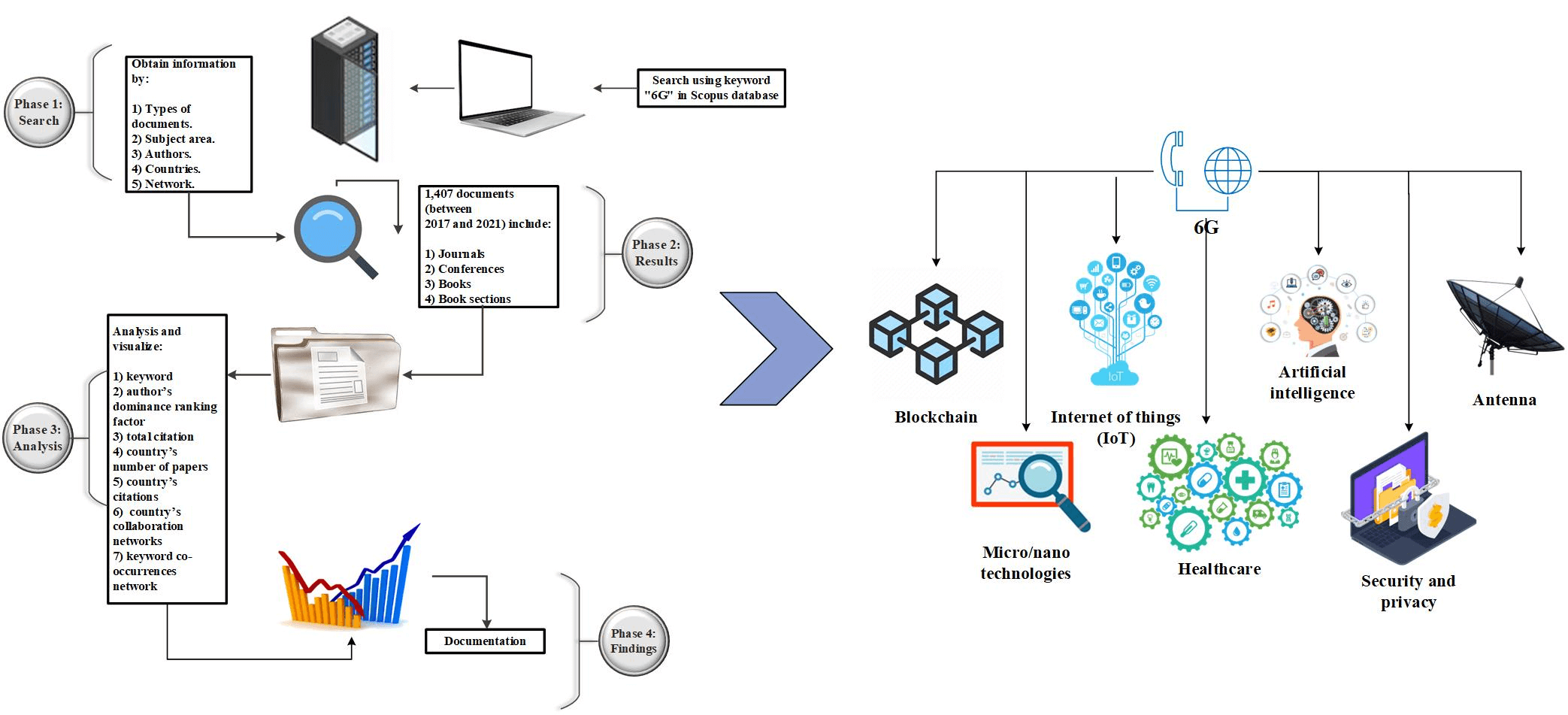 Open Access
Open Access
REVIEW
A Review and Bibliometric Analysis of the Current Studies for the 6G Networks
1 Faculty of Computing, Universiti Malaysia Pahang Al-Sultan Abdullah (UMPSA), Pekan, Pahang, 26600, Malaysia
2 Department of Medical Equipment Technology Engineering, Al Salam University College, Baghdad, Iraq
3 School of Mathematics and Computer Science, University of Wolverhampton, Wolverhampton, 01902, UK
4 Department of Production Engineering and Metallurgy, University of Technology, Baghdad, Iraq
5 Cardiff School of Technologies, Cardiff Metropolitan University, Cardiff, CF5 2YB, UK
6 Institute for Big Data Analytics and Artificial Intelligence (IBDAAI), Kompleks Al-Khawarizmi, Universiti Teknologi MARA, Shah Alam, Selangor, 40450, Malaysia
7 Department Computer Science, Al-Salam University College, Baghdad, Iraq
* Corresponding Author: Qusay M. Salih. Email:
Computer Modeling in Engineering & Sciences 2024, 140(3), 2165-2206. https://doi.org/10.32604/cmes.2024.028132
Received 01 December 2022; Accepted 20 July 2023; Issue published 08 July 2024
Abstract
The race to develop the next generation of wireless networks, known as Sixth Generation (6G) wireless, which will be operational in 2030, has already begun. To realize its full potential over the next decade, 6G will undoubtedly necessitate additional improvements that integrate existing solutions with cutting-edge ones. However, the studies about 6G are mainly limited and scattered, whereas no bibliometric study covers the 6G field. Thus, this study aims to review, examine, and summarize existing studies and research activities in 6G. This study has examined the Scopus database through a bibliometric analysis of more than 1,000 papers published between 2017 and 2021. Then, we applied the bibliometric analysis methods by including (1) document type, (2) subject area, (3) author, and (4) country of publication. The study’s results reflect the research 6G community’s trends, highlight important research challenges, and elucidate potential directions for future research in this interesting area.Graphic Abstract

Keywords
Cite This Article
 Copyright © 2024 The Author(s). Published by Tech Science Press.
Copyright © 2024 The Author(s). Published by Tech Science Press.This work is licensed under a Creative Commons Attribution 4.0 International License , which permits unrestricted use, distribution, and reproduction in any medium, provided the original work is properly cited.


 Submit a Paper
Submit a Paper Propose a Special lssue
Propose a Special lssue View Full Text
View Full Text Download PDF
Download PDF Downloads
Downloads
 Citation Tools
Citation Tools
